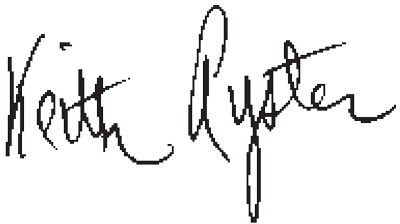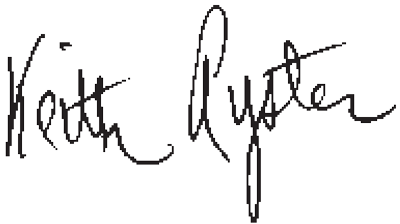22
Management Writing
When employees write on the job, they often do so to communicate with individuals. When managers write on the job, they often do so to communicate with an entire department, division, or company. What they write has a direct and often profound effect on many people. That’s why management writing should be well polished before it is presented.
This chapter can help. Whether you are setting policies and procedures, evaluating existing employees, or conducting a search for new employees, you’ll find the management writing guidelines and models you need.
In this chapter
Guidelines Policy Statements
Your goal is to explain the organization’s policy regarding a workplace issue.
-
Plan: (Ideas and Organization)
-
What exactly is the issue (including its history), and how does the issue relate to your organization’s mission, values, and priorities?
-
Who will read the policy statement now and in the future, and what will their concerns and attitudes be?
Prepare to draft.
-
Review relevant company documents: mission statement, related policy statements, minutes, the employee handbook, and so forth.
-
Research the issue carefully: Interview people (other managers, legal council, and employees) knowledgeable about the topic; read reliable sources; and study other organizations’ policies on this topic.
-
-
Draft: (Ideas, Organization, and Voice)
Opening Introduce the policy and explain why it is adopted.
Middle Explain the policy and its implementation.
-
Indicate what employees must do, when, where, and how.
-
Outline what the organization will do, when, where, and how.
Closing List dates the policy is adopted and revised and any reference documents.
-
-
Revise: (Ideas, Organization, Voice, Words, and Sentences)
-
Is the policy correctly identified, clearly explained, and sufficiently supported?
-
Is the organization clear and logical?
-
Is the voice informed, reasoned, fair, and concerned?
-
-
Edit: (Conventions and Design)
-
Are names, titles, and dates correct?
-
Are spelling, punctuation, usage, and grammar correct?
-
Does the formatting provide easy access and use?
-
“By definition, a government has no conscience. Sometimes it has a policy, but nothing more.”
—Albert Camus
Writing Policy Statements on Quality Control
Quality Policy
Opening: State the policy's name and subject. UMI Manufacturing Inc. aims to produce products that meet or exceed both industry standards and our customers’ expectations for quality. Providing quality products and services is the heart of UMI’s mission and success.
To that end, UMI Manufacturing, on an ongoing basis, commits to
-
Middle: Develop the policy in greater detail monitor and improve products based on customer needs.
-
correct procedures that create problems for customers and document both the actions taken and the results.
-
monitor and reduce process variation in order to decrease product costs.
-
use environmentally sound practices.
-
invest time and resources in employee training that supports product improvement and customer satisfaction.
Closing: List adoption and revision dates. Adopted: 3/21/17
Revised: 7/14/19
Guidelines Writing Procedures
Your goal is to instruct readers about the procedure for carrying out a policy.
-
Plan: (Ideas and Organization)
-
What is the policy, and what must readers know in order to implement it?
-
What are the priorities and responsibilities of your readers? How will the procedure impact their work?
-
When, where, and how will the procedure be used?
Prepare to draft.
-
Study relevant documents such as related policies and procedures as well as the minutes of the committee that adopted the policy that you’re implementing.
-
Interview people familiar with the issues in the policies.
-
List necessary ingredients: people, tasks, tools, and materials. If possible, practice the procedure and take notes.
-
Consider timing: How long should the procedure take?
-
-
Draft: (Ideas, Organization, and Voice)
Opening Identify and summarize the policy and procedure.
Middle Give step-by-step instructions.
-
Spell out necessary actions.
-
Cite who must do each activity and by when.
Closing State the outcome and any necessary follow-up.
-
-
Revise: (Ideas, Organization, Voice, Words, and Sentences)
-
Does the procedure accurately implement the policy?
-
Are safety, security, and legal issues correctly addressed?
-
Are steps, assignments, and due dates clear and correct?
-
-
Edit: (Conventions and Design)
-
Are names, titles, due dates, and procedural terms correct?
-
Does the procedure use action verbs, numbered steps, and an attractive format?
-
Are the spelling, punctuation, and grammar correct?
-
“I had been told that the training procedure with cats was difficult. It’s not. Mine had me trained in two days.”
—Bill Dana
Writing Procedures
Opening: Identify the organization and topic; summarize the policy. The Family and Children’s Coalition Confidentiality Policy states that all clients have the right to confidentiality. Conduct your work in keeping with this policy by following the procedures below.
Middle: Use clear headings throughout. Client Intakes:
During the client intake, the Coalition counselor should discuss the conditions of confidentiality with the client. These conditions include the following:
-
List steps clearly, including which documents to complete and submit. Information will never be shared unless the client has given written permission using the Consent to Release Form.
-
Confidentiality may be limited or canceled if Coalition staff have serious concerns about child abuse or neglect, or if the client is a danger to herself or himself, or to others.
Outside Requests for Information:
Coalition counselors will handle outside requests for client information.
-
No client information will be shared without the client’s written permission.
-
Clients will be notified of any outside requests for information. To give permission, the client must sign the Consent to Release Form and specifically indicate what information may be released and to whom. A Coalition counselor also must sign the release form.
Breaches of Confidentiality:
If a client believes that Coalition staff have not observed the confidentiality policy and procedures, the client should be directed to follow the Client Grievance Process.
Closing: Close with a fitting summary or restatement. By carefully following the procedures above, Coalition staff can help clients while also respecting their rights to confidentiality.
Guidelines Writing Employee Evaluations
Your goal is to objectively evaluate a person’s strengths and weaknesses.
-
Plan: (Ideas and Organization)
-
Do you anticipate a positive, negative, or mixed review?
-
Who will read the evaluation—the employee, HR staff, other managers? What will their concerns be?
-
What is the employee’s history with the company? What key forces and events have impacted this person’s position during the review period?
-
How must you present your evaluation—form, memo, email, letter?
Gather details and prepare to write.
-
Review key documents: job description, Employee Handbook, the employee’s self-assessment, past evaluations, and work record.
-
Measure recent performance (awards, productivity, projects completed, assessments by coworkers or clients); analyze reasons for success or difficulty; and brainstorm ways of building on strengths and resolving weaknesses.
-
-
Draft: (Ideas, Organization, and Voice)
Opening Provide important employee information.
Middle Present your evaluation.
-
Use direct organization for a positive critique.
-
Use indirect organization for a negative critique: (1) what led to the assessment, (2) the assessment, and (3) corrective steps.
Closing Sum up the assessment and anticipate future improvement.
-
-
Revise: (Ideas, Organization, Voice, Words, and Sentences)
-
Are main points clear, correct, well organized, and supported?
-
Is the tone objective, fair, genuine, and concerned?
-
Is wording clear?
-
-
Edit: (Conventions and Design)
-
Are grammar, spelling, punctuation, and usage correct?
-
Does the evaluation follow the correct format?
-
“There are four ways, and only four ways, in which we have contact with the world. We are evaluated and classified by these four contacts: what we do, how we look, what we say, and how we say it.”
—Dale Carnegie
Writing Employee Evaluations (Short Form)
Empire Estates Employee Evaluation
Opening: Provide the basic details describing the job and person. Employee: Larry Mott
Job Title: Mortgage Specialist II
Hire Date: April 17, 2010
Supervisor: Sarah Iverson
Title: Mortgage Specialist Supervisor
Evaluation Date: December 3, 2019
Using the scale below, rate the employee’s performance. (If an area does not apply to this position, write “NA.”) Support your rating with details.
Define the rating scale clearly. Rating Scale:
5 – EXCELLENT: Performance frequently exceeds requirements and expectations. Outstanding work.
4 – GOOD: Performance is above average. Employee is reliable and independent.
3 – ACCEPTABLE: Performance meets requirements and expectations. Goals met with normal supervision.
2 – MARGINAL: Performance needs improvement to meet job requirements and expectations.
1 – UNACCEPTABLE: Performance fails to meet job requirements and expectations. Not reliable, unable to work independently. Poor understanding of position.
Quality of Work
4—Larry is hardworking and regularly attends seminars to refine his skills.
When completing the form, include scores along with supporting details. Analytical and Problem-Solving Skills
3—Larry has strong skills when handling standard mortgages but needs to learn greater flexibility with FHA or VA loans.
Job Knowledge
4—Larry understands/applies information, instructions, and procedures. He has learned to do cash reservations, lockboxes, and CPI system balancing.
Communication Skills
3—Larry sometimes finds it difficult to explain the technical aspects of mortgages to some clients.
Interpersonal Skills
3—Larry is well liked by coworkers but needs to learn greater patience in dealing with clients.
Writing Employee Evaluations (Long Form)
1 of 2
Empire Estates Incorporated Employee Evaluation
Opening: State the organization, person, and key details about the job. Employee: Mary Lamont
Job Title: Mortgage Specialist II
Hire Date: April 16, 2011
Supervisor: Sam Everly
Title: Mortgage Specialist Supervisor
Evaluation Date: September 10, 2019
Part A: Job Responsibilities: (List 3-5 key roles from job description.)
-
Reconciling A/A and S/S accounts
-
Middle: List the job's responsibilities in order of importance. Reconciling FHLMC P & I accounts
-
CPI system balancing
-
Troubleshooting and technical advisor/supervisor
Part B: Job Characteristics: Rank the employee’s performance (E for excellent, G for good, A for acceptable, M for marginal, U for unacceptable) and specify areas of strength and areas for improvement.
Respond to the topics listed. Job Characteristics
-
Quality of work: Produces consistent and correct work.
G—Works steadily. -
Productivity: Produces an expected quantity of work on time.
State additional details in a fair, objective voice. G—Production levels good; some delays due to troubleshooting. -
Job Knowledge: Understands, retains, and applies information, instructions, and procedures.
A—Good analytical skills; needs training on Monarch and Access. -
Communication Skills: Communicates effectively. Writes clearly and concisely in language appropriate for the reader.
E—Works well with customers; accommodating. -
Decision-Making Skills: Identifies problems and implements solutions.
A—Solves problems well; needs to develop leadership skills. -
Interpersonal Skills: Works respectfully and cooperatively with coworkers and clients.
E—Works well with both administrators and customers.
2 of 2
Part C: Performance Evaluation Summary: Review Parts A & B; then summarize the demonstrated strengths and areas for improvement.
Demonstrated Strengths
Name the person's strengths and give details. Mary’s analytical skills help her produce quality work on a consistent basis. She’s a quick learner of new systems. In addition, Mary’s excellent interpersonal and communication skills enable her to work well with colleagues and customers.
Areas for Improvement
Cite weaknesses precisely and clearly. Mary should receive further training to strengthen her knowledge of Monarch and Access. She also needs additional supervisory training to expand her skills in troubleshooting and problem solving.
Part D: Individual Development Plan: Establish an individual plan to further develop or improve skills. Plans may include additional training, seminars, on-the-job assignments, etc.
-
List activities and dates. Fall 2019: Additional training in Monarch and Access
-
Spring 2020: Leadership seminars to strengthen supervisory skills
Part E: Employee Response:
Respond honestly but politely. I appreciate this fair evaluation and look forward to growing professionally through the suggested training and seminars.
Prepared by: Sam Everly, Mortgage Specialist Supervisor
Date: September 10, 2019
Closing: Sign and date as requested. Reviewed by: Dan Levine, Mortgage Department Supervisor
Date: September 13, 2019
Employee Signature:

Date: September 14, 2019
Note: The employee’s signature above does not necessarily constitute agreement with this evaluation.
Guidelines Writing Application Follow-Up Messages
Your goal is to express appreciation for the application and to keep strong candidates interested.
-
Plan: (Ideas and Organization)
-
What are the applicant’s strengths and weaknesses?
-
How does the applicant match the job requirements?
-
How does this applicant compare with others?
Gather details and prepare to write.
-
Reread the job description and note details.
-
Review the application for key (or missing) information.
-
Note the person’s current job situation, availability, and contact information.
-
-
Draft: (Ideas, Organization, and Voice)
Opening Greet the reader, mention the application, and show appreciation.
Middle Explain the selection process.
-
Encourage strong candidates.
-
For weak candidates, state objectively but courteously why they do not meet the job requirements.
Closing State appreciation, and encourage strong candidates to complete the process.
-
-
Revise: (Ideas, Organization, Voice, Words, and Sentences)
-
Are details related to the applicant, job, and organization correct and complete?
-
Does the message have brief paragraphs and clear transitions?
-
Is the voice informed, confident, professional, and positive?
-
Is wording clear?
-
-
Edit: (Conventions and Design)
-
Are spelling, punctuation, and usage correct?
-
Is the format effective (parts, spacing, typography, and so forth)?
-
“Whenever you are asked if you can do a job, tell ’em, ‘Certainly I can!’ Then get busy and find out how to do it.”
—Theodore Roosevelt
Writing Application Follow-Ups (Strong Candidate)
June 25, 2019
Mr. Marvin Greenfield
1554 Bastian Street
Lapeer, MI 48446-1601
Opening: Greet the reader and acknowledge the application. Dear Mr. Greenfield:
Thank you for submitting your application and résumé for the position of Chief Microbiologist at Triplex Technologies, Inc. Your academic research on environmental hazards with the University of Michigan’s Biology Department and your subsequent work as a microbiologist for the EPA indicate that you have much to offer our company.
Middle: Describe the status of the process and (if needed) request information. Evaluation of all applications is nearly complete, and we will begin interviewing in two weeks. To help us gain a clearer view of your qualifications, please send us a job description detailing your current work responsibilities.
Closing: Express thanks and encourage the applicant. Thank you again for your interest in Triplex Technologies. Your résumé and credentials show you to be a deserving candidate for the position of Chief Microbiologist. Please send the requested materials to our Human Resources Department by July 8.
Sincerely,

Keith Ryster
Human Resources Manager
Writing Application Follow-Ups (Weak Candidate)
May 14, 2019
Mr. Frederick O’Brien
1525 Montgomery Street
Oakland, CA 94612-6315
Dear Mr. O’Brien:
Opening: Express appreciation for the application. Thank you for submitting your application and résumé for the accounting position at Levinsky and Gring. We have reviewed your academic achievements and experience.
Middle: State your disinterest in the application courteously. You are probably aware that the competition is formidable for staff accounting positions in large firms. Although your background is commendable, it does not match our current needs. Experience working at a smaller firm could strengthen your résumé and increase your chances of employment in a large firm.
Closing: Reiterate your appreciation and wish success elsewhere. We do appreciate your interest and wish you success in securing a position.
Sincerely,

Ruby Unger
Director of Recruiting
Writing Employer’s Job-Offer Letters
July 24, 2019
Mr. Marvin Greenfield
1554 Bastian Street
Lapeer, MI 48446-1601
Dear Mr. Greenfield:
Opening: Offer congratulations. I am pleased to offer to you the position of Chief Microbiologist at Triplex Technologies. Your enthusiasm and range of experience set you apart from the other applicants whom we considered.
Middle: State contract details. Following are further details regarding this position:
-
Your salary will be $100,000, with a review based on your yearly performance appraisal.
-
The starting date is Monday, August 16, 2019,with a three-month probationary period.
-
An overview of employee benefits is enclosed. If you have questions, please call Judy Owen, Human Resources Assistant (616-555-8911).
Mr. Greenfield, we sincerely hope that you will accept our offer. We are eager to work with you and believe that our relationship will be mutually beneficial.
Closing: Encourage acceptance and note the date for the reader’s decision. Please inform me of your decision by August 2, 2019. You may call my office at 616-555-8948. Thank you again for your interest in Triplex Technologies, and I look forward to your reply.
Sincerely,

Keith Ryster
Human Resources Manager
Enc.: Employee Benefits
Checklist Management Writing
Your goal is to produce management writing that is clear, complete, correct, and professional.
-
The main point is clearly stated.
-
Supporting details are complete and compelling.
-
-
The writing follows the appropriate form.
-
The beginning provides a strong introduction.
-
The middle includes details following an appropriate organizational pattern.
-
The ending sums up the form well.
-
-
The voice is positive, confident, and objective.
-
The voice connects to the intended audience.
-
The language is formal.
-
-
Active verbs are used to be direct and passive verbs to be indirect.
-
Nouns are specific, and technical terms are defined.
-
-
The sentences read smoothly and include logical transitions.
-
-
The writing contains no errors in grammar, punctuation, usage, or spelling.
-
-
The writing follows the expected format.
-
White space, typography, and other design features are used well.
-
“Management is nothing more than motivating other people.”
—Lee Iacocca